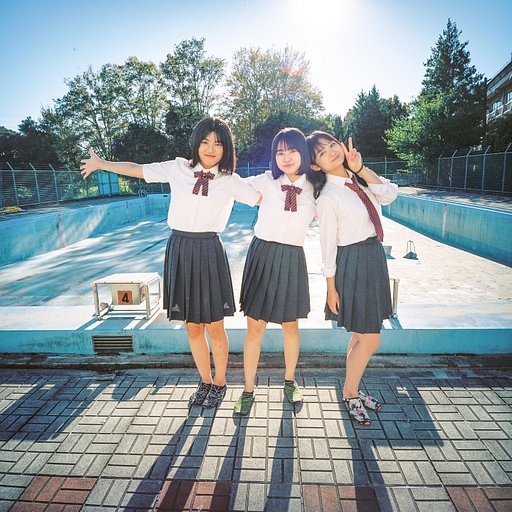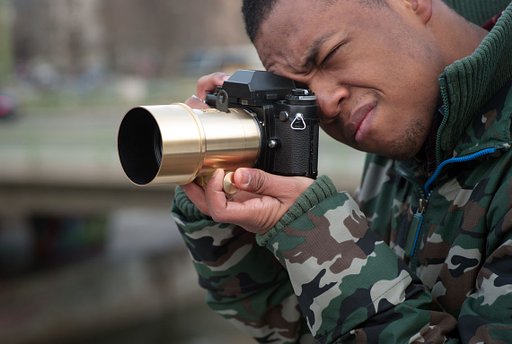The Two-Day American Road Trip
7 24 Share TweetA long-time fan of plastic cameras, Argentinean writer and photographer Lorraine Healy (@lorrainehealy) is the author of “Tricks With A Plastic Wonder,” a manual for achieving better results with a Holga camera. In this article, co-written with Argentinean photographer and sociologist-in-training Sofía Fernández Crespo (@sofifc), they ponder on American road trips from the point of view of the non-native visitor.

Is it possible to “do the American Road trip” in two days? After all, is it not the tradition to accomplish it on a longer time frame, with the car getting dustier by the hour and the insides of it messier per traveled mile?

In the Summer of 2016, we had exactly two days to do a very brief version of the classic road trip. Two Argentineans, both analogue photographers, one a resident of the USA for twenty-something years and the other a well-traveled, curious youngster, we decided to take that one weekend we had available and set out on Highway 2. We planned to travel from its start, at the town of Everett, to the beginnings of the Palouse area in Eastern Washington State, then drive around and back through a different route to the Seattle area. 310 miles the first day and another 140 miles the next, for a modest total of 550 miles, give or take. Along the way, we needed to experience vast open spaces, one ghost town, a very small town America, a couple of drive-ins and diners, burn through tens of rolls of film, and take turns deciding on the music. The fact that it was July, with its long days in Washington State, meant we could make a decent stab at it.
Geoff Dyer said it was photographer Robert Frank who gave us the "ongoing" moment as opposed to the "decisive" moment. Frank invented America "as a place to be seen from a car, a country that could be seen without stopping." The idea of traveling by car and visiting some remote places in Washington State was really exciting. What completed the magical experience was the thought that we were going to document the essence of a vanishing identity.

It was no coincidence that we choose a road trip to do so, as the car has had such an enduring impact on American culture and its social imagination. Back in the ‘50s, not only did it represent the growth in the population’s purchasing power but it also helped shape a different conception of time and space. People could broaden their relationships by exceeding their community’s horizon and they could reach places unlike any time before. Consequently, it boosted regional tourism and the construction of highways and the necessary infrastructure to support that movement. In that way, diners were given yet another meaning — from a cheap eatery for local workers in manufacturing industries to a quintessentially “American Road” experience.

We had the opportunity to capture the remains of some historic icons and cultural symbols, such as diners, neon signs, changeable-letters signs, old local haunts, motels, abandoned theaters, school-houses, and thrift shops. From my point of view, as a visitor, these vestiges show an American culture going in two opposing directions. On the one hand, we live in a modern world, which implies the development of cutting-edge technologies and their inbuilt obsolescence, demanding constant updating and the anxiety to arrive at a so-called progress. Modern globalization also means that whatever makes a culture standout can now be imported worldwide — the golden arches restaurant started out as a small-town diner, and aren’t there “McDiners” everywhere now? On the other hand, even though each culture is embracing change, old traditions and aesthetics are making a comeback. Vintage clothes, goods, and analogue technologies are becoming trendy and being consumed and produced once more.

Paul Simon’s song says “all come to look for America”, and it’s true, we do. But which America? Of course, the country is too immense to see at one go. But I felt fortunate to have the chance to see little towns I wouldn’t have had the opportunity to visit otherwise. These places of local libraries, drive-thrus, and ancient gas stations required hundreds of pictures. I felt drawn to these little towns and was surprised to see very few people around. Most of these places seemed to be so sparsely populated. This is especially true for the Palouse. I saw endless golden wheat fields for the first time and the barest trace of civilization there.

For me, our road trip was an excuse to travel but it sprung all these questions in my mind, so I look at the experience as an invitation to think about these issues (well, I am a Sociology major!). I find preservation in any of its forms — be it photography, archaeological or any form of research — to be a crucial way to prevent ourselves from losing such cultural traditions.

Even though it was a short (albeit sweet) trip, I was able to get a glance at American culture from a few decades ago. It made me wonder how different life might have been back then which made me eager to go back for a longer road trip. One thing is certain: I’ll go back with the same companion but with even more rolls of film!

In the end, we think it really does not matter how many days one has for a “proper American road trip”. However far you can get from the big city into the country of small towns, curiosities, roadside attractions, old-fashioned diners: that’s it. That is a road trip. Fill up the tank, crank up the music, hit that road. Make sure you take cameras that would have looked like they belonged in 1960.

Lorraine Healy (@lorrainehealy) is an Argentinean writer and photographer living in the Pacific Northwest. A long-time fan of plastic cameras and she is the author of “Tricks With A Plastic Wonder,” a manual for achieving better results with a Holga camera, available as an eBook from Amazon.com.
2018-09-25 #places #travel #120 #expired-film #american #point-and-shoot #roadtrip #35-mm #holga-n #fuji-200 #sprocket-rocket #lomo-color-negative-100 #vivitar480z Lorraine Healy の記事














7 Comment